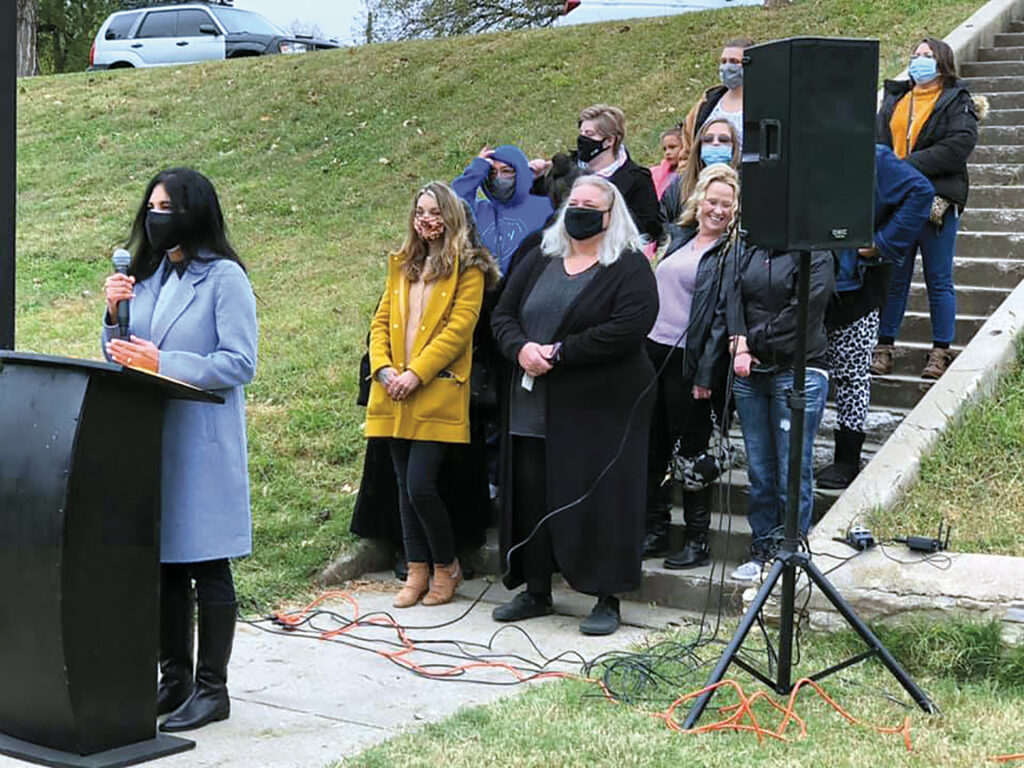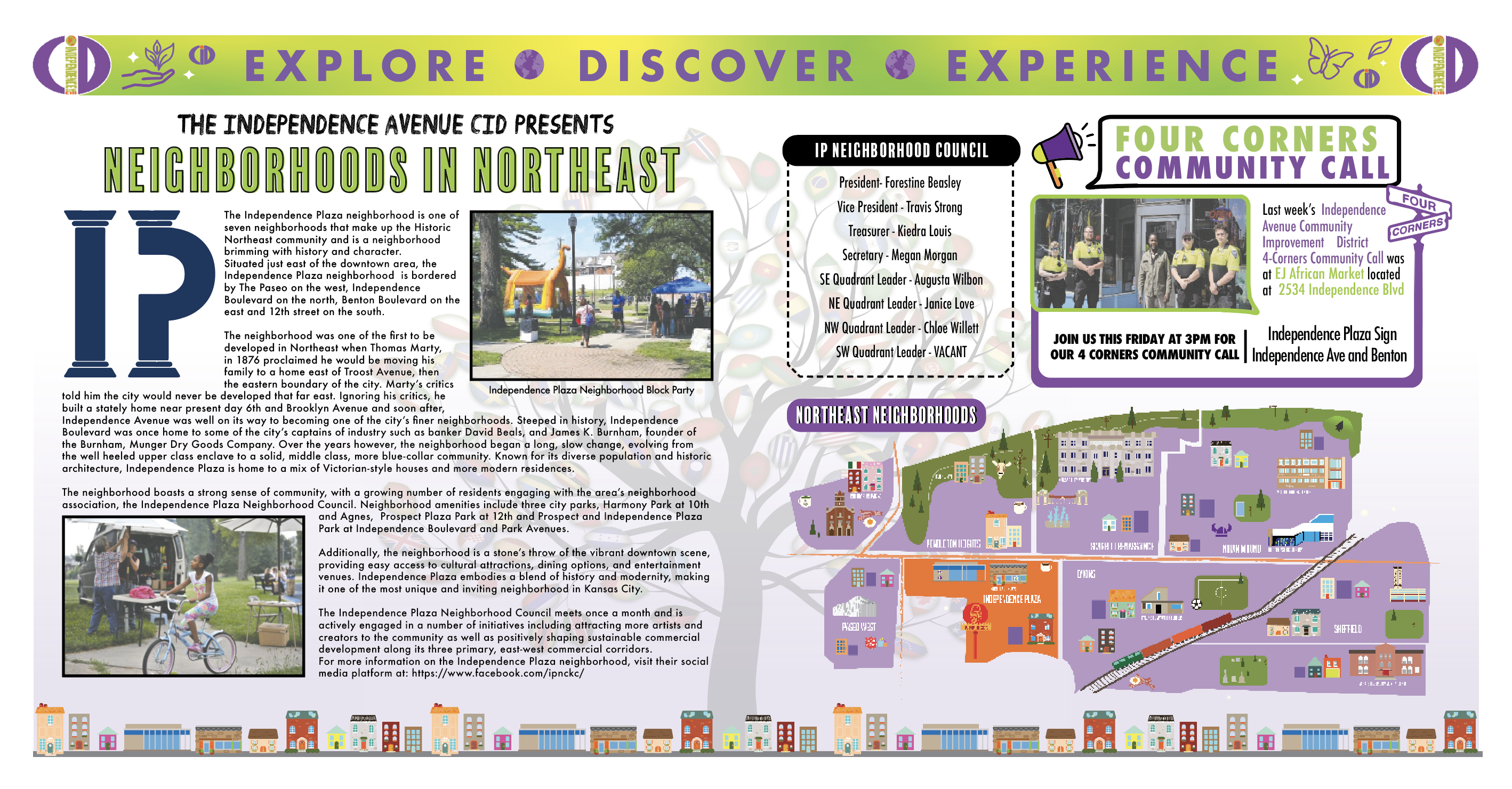
Abby Hoover
Managing Editor
Lykins Square Park is now home to a permanent art installation memorializing victims of human trafficking. The four lighted panels of painted Venetian glass were installed and dedicated on Saturday, Oct. 24.
Glass artist Hasna Sal found her inspiration in stories she heard from Christine McDonald, a blind survivor of commercial sexual exploitation in Northeast, who now works to bring awareness through telling her story.
“For the girls, they’ll know they’re acknowledged, whether that becomes something that’s a seed planted because oftentimes there’s no hope,” McDonald said. “The police don’t see me, the emergency room doesn’t see me, nobody’s extending a hand out, right? Nobody sees my tears, my pain. This is an acknowledgement of that, and I think that is still a little piece of hope. ‘Hey, somebody saw me, somebody look at this.’”
McDonald said it also challenges the community to recognize that prostitution has had a constant presence here for decades. She thinks the community can come to acknowledge it through the art and the story it tells of pain and hope.
“I don’t think we focus on our neighborhoods enough and the ways that we can show through arts, investment in parks, through our investments in people, how great Kansas City truly is,” Kansas City Mayor Quinton Lucas said.
Lucas met McDonald a few years back, and said he is inspired by her dedication to changing lives not just in Northeast, but throughout Kansas City.
The two-year project was supported by the HALO Foundation and Habitat for Humanity, among others. Sal thought it was a crucial addition to the Lykins Neighborhood revitalization efforts.
“Christine McDonald is a woman hero that, despite her blindness, she is still able to do social work and said she goes to different places and she talks to women about empowering them and things like that, and I said, ‘she needs a larger voice,’” Sal told the Northeast News.
McDonald opened Sal’s eyes to the issue of human trafficking, prompting her to begin research, where she was surprised by the magnitude of the “social disease.”
“It’s a pandemic that is growing, has been growing forever and ever, and United States is one of the highest consumers of human trafficking, and then I found out there is a whole hill in my city, it’s called Hooker Hill, and as an artist, as an architect, I felt like I needed to do something,” Sal said.
From her own experience and learning from research on urbanism, Sal believes that if neighborhood revitalization includes art, people will take better care of their communities.
“You have to give the people a sense of belonging,” Sal said.

She met with McDonald, who walked with her down Independence Avenue and through Lykins Square Park, which both played a huge role in her past.
McDonald recalled sitting on the steps at Lykins Square Park in her past life, catching up with other women working the streets.
“When we sat at the steps down at Lykins we would all share stories and sometimes catch up with each other and you know, some of us had hopes and dreams,” McDonald said. “I used to be one of those people that didn’t dare dream because there’s never going to be hope of a life outside the world of prostitution. The hopelessness, the walls that you have to create in order to survive.”
Sal was determined to create a meaningful representation of the people who had passed through that park. She created a small model of the project to present to the Lykins Neighborhood Association board, which was met with strong support.
“[She] worked with our Parks Department, worked with our Arts Commission, to make sure that this message is shared somewhere like here so kids here, people here, everyone here can look up at this beautiful artwork and see that we’re a community that cares,” Lucas said of Sal.
The project was funded through the generosity of community supporters and Sal, who is working pro bono. She was overwhelmed with gratitude by the financial support of her friends and others who saw the importance of her project, raising $10,000 in one afternoon.
““If we can foster a space where individuals can find that glimmer of hope and light that fire, that spark, to let them see their own value and worth, that we’re willing to fight with them when they make that choice, then they get to flourish and foster and blossom into whoever they want to be,” McDonald said.
Sal’s work is full of symbolism and meaning. She said glass is a metaphor for a survivor.
“When glass is born, she is vulnerable, she is delicate, and when she comes into the artist’s hand, the artist breaks her, shatters her, crumbles her, powders her, but do you think she is destroyed?” Sal asked. “No, she is not destroyed, she is empowered. By breaking her you have empowered her.”
Sal said that although glass is held by metal in stained glass work that blocks its light, glass can stand on her own.
“I have tried very hard for months, and I finally achieved it that I am presenting the glass today with no metal to take away her light, and it is symbolic for me,” Sal said. “When sunlight comes through her, she will glow and she will radiate, she will be the most beautiful self that she can ever be.”
Sal said what has been created in the park is a healing place, right here in the community.


















